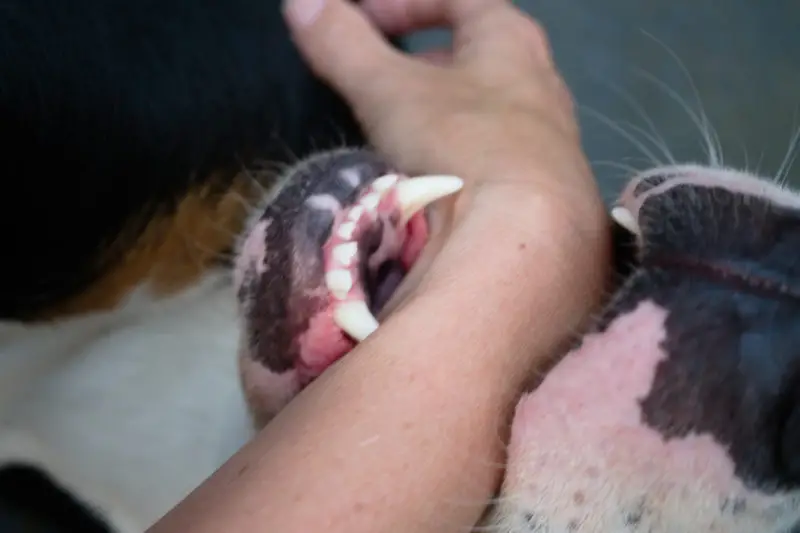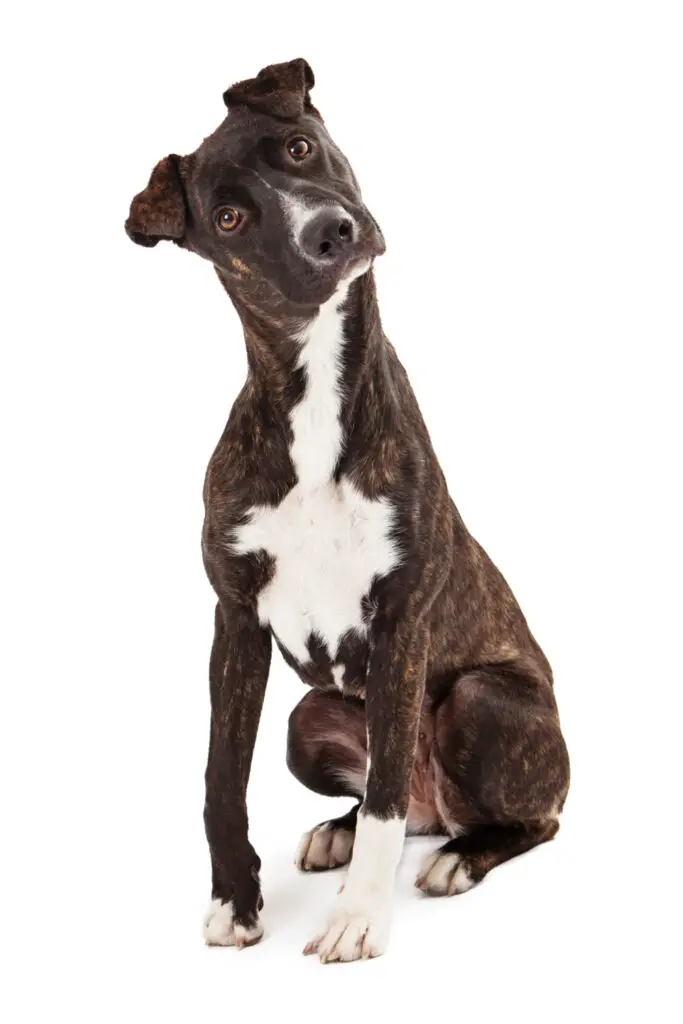Dog Bite Cases in New York
What Fred the bull and dog breeds have in common for dog bite cases in New York? The general rule is that the owner is liable for the injury caused by such breed only when the former has knowledge of the latter’s vicious propensities.

Indeed, New York City used to be the perfect place for people to live with their dogs. Surprisingly, there’s a lot of pet-friendly apartments, parks, and dog runs. Some buildings even provide amenities for dogs such as heated and covered dog runs or indoor dog parks.

However, the Housing Authority of New York City started to ban certain dog breeds in February of 2010. This new policy has disturbed dog owners as well as other people in most public housing complexes. The ban only applied to large breed dogs in rent-controlled or property owned by the Housing Authority, not private landlords or businesses.please read here landlord dog bite liability
Residents claim that the dog banning policy is unfair. Some people thought that it is somewhat a kind of profiling for dogs that single out some dog breeds from the rest. At some point, others also perceive that this policy treats dog owners as potential problem tenants.
The state formulated this policy based on the following Statistics of dog bite incidents in New York City:
- That is the year 2018; dog bites resulted in the death of 39 people;
- That every year, there are 6,000 emergency dog bite cases on average;
- That the leading cause of injuries among children is dog bit incidents; and
- That the majority of dog bite cases are due to dogs with an owner.
Most Common Types of Dog-Related Injuries and Accidents in New York
Whenever people heard of a dog bite attack, most of them would immediately assume that the dog bites severely injured the victim. Little did they know that majority of dog-related lawsuits on severe injuries do not involve a bite.

Let us take this New York case which involves a pedestrian. She is trying to escape from a loose dog when she was hit by a vehicle. In that particular case, the victim has proven that the dog owner failed to restrain the dog, knowing it has a vicious tendency to run after pedestrians passing by. please read here how to restrain a large dog for nail clipping
As such, the defendant was held liable for all the plaintiff’s injuries as she evades the dog. Some other dog-related severe incidents include fall and slipcases when a dog chases bikers, growls at runners and pedestrians, or jumps on visitors. please read here how to stop a dog from jumping
Impacts or dog-related incidents such as dog bites, for example, can be lifelong. Most victims report having experienced severe psychological damages such as permanent fear for dogs. These kinds of injuries often require treatment as well.
Some other injuries usually instigated by dogs are severe pain, loss of mobility, high medical costs, and lost wages. In horrendous cases where the dog owner knew about its recurrent violent attacks, the plaintiff might also be entitled to punitive damages.
New York Dog Bite Laws
What Fred the bull and dog breeds have in common for dog bite cases in New York? Here’s the thing:

The law for dog bites in New York is complicated because they do not follow a single set of rules. Since New York is a mixed state, it follows both strict liability and one bite laws. please read here veterinarian dog bite liability
One bite law
This law is implemented mainly before the 20th century. It requires dog owners to be held liable if they are aware of the tendencies that their dog might bite. As such, it has protected dogs that bit only once.
There are several attempts to change this law, but all of them are unsuccessful. Thus, victims with severe damages are not usually compensated for the extensive medical bills except for those who have proven that the dog owner knows their dogs being dangerous.please read here Flashing The ‘Red Rocket’: Why Does My Dog Get Random Boners
The victim can prove this using several ways. In New York, if the dog has been involved in a straightforward case, there will surely be an established bite record for it.
In case of aggression history, the dog will be deemed dangerous, as stated in the records. The records are kept by the SPCA, Department of Health, and the police. You can access these records with the help of New York City liability attorneys.
But in cases where the dog that bit the victim has not been previously reported, the law permits the victim to show that the owner is aware of their propensity. It would still apply even if the dog hasn’t bitten anyone before.
The attorney should gather evidence and fight to prove that such a dog has previously attempted to bite people, growled, or snarled at pedestrians. It is even permitted in court to verify that the dog has acted reasonably, which can harm another’s safety.
Strict liability laws
This one is the more recent legislation that is followed by most states. It holds the defendant liable in cases where a dog bite incident occurs no matter what could have been done to refrain the incident from happening.
In other words, the dog owner is liable for any dog bite incident for as long as the victim didn’t provoke the dog.
Some provocation scenarios include:
- A dog guarding the house against a trespasser;
- A dog protecting its puppies or its owner;
- The dog is currently suffering or is reacting to pain; or
- It is provoked by assault, abuse, or torment.
The owner of the dangerous dog that has been previously adjudicated is liable for the victim’s veterinary and medical costs.
If there are other damages, the victim should prove that the dog has a violent nature and might harm other people, and its owner is aware of it. In New York, victims are not allowed to receive compensation due to negligence alone. Let us elaborate further on this below.
Negligence
A plaintiff can use the main factor to win in a dog bite case by proving negligence. However, this is not typically allowed as a ground for any lawsuit goal, such as compensation. In New York, a successful lawsuit requires vicious propensity.
It has to be proven that the owner has foreknowledge of its dog’s vicious temperament. An exception to this is related to the principle of negligence when the defendant violates state laws.
Proof Of Vicious Propensity
As stated earlier, the dog bite victim must prove the dog’s vicious propensity to claim compensation against the defendant or convict him or her of a misdemeanor. The only way to prove this in New York State is an initial bite.

General behavioral issues such as barking or growling, for example, are not sufficient to make that claim proven as accurate. In other words, pointing into dog restraints such as leashes, chains, “beware of dogs” signage cannot be used as solid evidence to claim that the owner is knowledgeable of its vicious propensity.
It is challenging and complicated for many dog bite victims to find attorneys or lawyers to handle their cases.
Liability For Damages From Dog Bite Cases In New York
Under the stature of dangerous dogs in New York, the dog owner is strictly liable for the medical bills that resulted from the injuries caused by such dog. It has to be proven first that the dog is indeed dangerous before one can claim compensation for the medical bills and other expenses against the dog owner.
And it is still applicable even if the owner has taken a reasonable precaution to restrain or control the dog.
For any other damages that resulted from the dog bite incident, the victim must find a way to prove the dog owner’s negligence. Strictly speaking, it has to be proven that the dog owner did not take reasonable measures to prevent the incident from happening.
For instance, a dog got out of their yard, entered the yard of its neighbor by breaking down their fence, and bites someone there.
Under the strict liability regulation in New York, the injured person may compensate for its medication costs but may not recover the costs incurred for the broken fence replacement. Not unless the injured neighbor can prove the dog owner has not taken reasonable measures to restrain his dog.
Defenses To Dog Bite Cases in New York City
The dog bite law in New York offers several potential defenses for dog owners when involved in a civil liability claim.
Here is the list:
- That the dog involved in a dog bite injury is a law enforcement dog carrying out its duties. With that being said, the dog cannot be considered dangerous based on the definition of “dangerous dogs” stated in the statute;
- That the dog only bites someone to protect its home from committing a crime or is trespassing on the property;
- That the dog was defending itself, its puppies, or its owner when the dog bite incident happened; or
- That the dog was suffering or reacting to pain when it injured or bit someone.
Dog Breed Discrimination
The most recent phenomenon among insurance policies is breed discrimination. This one started to occur after the enactment of breed-specific legislation in some state and municipal legislatures.
It resulted in high publicized attacks towards certain breeds, such as pit bulls. New York is among the twenty states that implemented breed-specific legislation. This law restricts or prohibits certain dog breeds.
However, such a rule only applies to municipalities and cities and not to landlords. For that reason, renters who own Pit Bulls or other breeds of big dogs are having a hard time finding a place to live.
This problem is such an ordeal for people struggling to find a place to live with their pets and even dogs themselves. That is because there is a high tendency to land in dog shelters, and if their owner isn’t able to secure housing, the dogs might not make it out of shelters.
For this very reason, the court submitted a bill in New York which seeks to make the banning of large dog breeds by the landlord’s something illegal. This bill’s primary goal is to make it easier for pit bull and large dog owners to find a place to live.
Assembly Bill A2065A will prohibit landlords in New York from discriminating against dogs by weight, size, and breed. This particular bill targets both public housing authorities and private landlords.
They may opt to bar dogs altogether, especially those that are individually deemed to be dangerous. In simpler terms, if landlords allow Pugs and Poodle, they should also allow Rotties and Pits.
Anyone owning a Pit Bull knows that they can be as cute as those other dog breeds. It can be a mushy pile of goofiness and love, too.
The assemblyman who proposes this bill states that the dogs’ behavior is not mainly due to their breed or size, and this statement is theoretically correct according to science.
Instead, dogs’ behavioral attributes are associated with proper or improper training imposed on them and not on their genetic disposition of being mean. Although this bill cannot provide solutions to all the problems, dogs will still be discriminated against by breeds, especially by insurers.
But families and dogs in New York will live a more leisurely life if this bill passes into law. The law will pave the way to a better future where dogs aren’t judged by their looks anymore.
Specific Dog Breeds That Are Banned In New York City
The new pet policy formulated by the NYCHA for public housing residents banned mixed-breed and full-breed pit bulls, Doberman and Rottweilers pinschers. It also applies to any dogs that weigh greater than 25 pounds if fully grown. But this policy only applies to new pets.
Tenants who already own any of the dogs, as mentioned earlier, can keep their pets for as long as the dogs are registered in the public housing agency of New York City. With that ban as a precedent, other city agencies also start to ban dog breeds other than Pit Bulls, Doberman, and Rottweiler.
Now the list of dog breeds prohibited in New York City goes a long way. Below is the complete list:
- Tosa Inu
- Shar Pei
- Neapolitan Mastiff
- Lottatore Brindisi
- Korean Jindo Dog
- Irish Staffordshire Bull Terrier
- Gull Terr
- Gull Dong
- Golden Retriever
- German Shepherd Akita Inu
- Fila Brasileiro
- English Mastiff
- Dalmatian
- Chow
- Cane Corso
- Bully Kuta
- Bull and Terrier
- Boxer
- Boston Terrier
- Bedlington Terrier
- Argentine Dogo
- American Staffordshire Terrier
- Alaskan Husky
- Alangu Mastiff
- Akita
Breed-Specific Laws
We have mentioned Breed-Specific Laws (BSL) several times already, but if it is pretty confusing for you what this term meant, don’t worry because we will clear it out in this section.
BSL is the term used to describe laws that ban or regulate particular dog breeds to reduce dog attacks on animals and humans. Regulated dog breeds mainly comprise pit bull terriers, including English Bull Terriers, Staffordshire Bull Terriers, American Staffordshire Terriers, etc.
In other states, Doberman Pinschers, Mastiffs, American Bulldogs, German Shepherds, or any mix of such dog breeds, or those who resemble them, are also included in regulated breeds.
Approximately there are over 700 cities in the United States that enact such breed-specific laws. But some states such as Illinois, Texas, and New York, for example, regulate, determine, and track dangerous dogs independently. Meaning to say they are prohibiting BSL and judge dogs reasonably regardless of their breed. please read here what is a belly band for dogs
Effectiveness of breed-specific laws
No evidence has proven that breed-specific legislation made communities less dangerous for humans as well as companion dogs. As such, the Centers for Disease Control and Prevention strongly opposed the enactment of BSL.
According to the CDC, there is no accurate data, and it is hard to identify dog breeds behind dog bite cases. It is especially true to mixed-breed dogs. Furthermore, breed-specific laws are complex and costly to enforce.
Alternatives to breed-specific laws
As mentioned earlier, no data can genuinely show that breed-specific laws have succeeded. Varying factors can be the reason behind a dog’s aggression. That includes training, socialization, reproductive status, experiences, sex, and heredity.
On the other hand, several studies can be used as a reference to indicate the positive effects of laws that are crafted equally for all dog breeds. This approach can comprise of the following alternatives:
- Enforcing laws that will require licenses for dogs;
- Make sterilization (neuter/spay) available for everyone, preferably at lower costs;
- Formulate laws for dangerous dogs that focus on dogs’ behavior as well as their guardians individually;
- Enhanced options for penalizing dangerous dogs;
- Ensuring that liability for dog owners adheres to animal control legislation;
- Make laws that will hold the dog’s guardians criminally and civilly responsible for unjustified damages or injuries done by their dogs;
- Laws that preclude chaining, tying, and nonsensical control, combined with upgraded enactment of animal fighting and cruelty laws; and
- Local area-based methods to deal with settling dangerous dogs or reckless guardian inquiries include all partners, accessible dog bite information, and suggested practical and enforceable approaches. please read here guard dog bites
Now Here is the Point About Fred the Pull in the Bard vs. Jahnke Case
Here are the facts of the case of Bard v. Jahnke, 6 N.Y.3d 592, 2006 N.Y. Slip Op. 3440, 815 N.Y.S.2d 16, 848 N.E.2d 463 (N.Y. 2006):
A bull named Fred attacked the plaintiff, who is a self-employed carpenter, on September 27, 2001. The plaintiff went to the pasture to do some carpentry repairs. But as he was doing the work, Fred rammed over him, which resulted in significant liver and rib injuries of the plaintiff.
He sued Mr. Jahnke, the bull owner, and argued that the farmer was liable for the injuries he suffered from the bull attack. But as we discussed earlier, New York law will only impose liability to the owner if and only if the owner has foreknowledge the animal’s vicious propensities – which is a bull in this case.
Fred the bull has no record of harming anyone or attacking any human being or farm animal before. It is not also tied or chained. Children are not even allowed to pet the bull. Even if the plaintiff disputed that a young and mating bull is always dangerous, the Court of Appeals still did not impose liability on the defendant. please read here child dog bites provokin
Since then, this case was used as a fundamental basis when a breed is contended as consequently setting up obligation in any animal assault, particularly a dog-related incident. This Bard vs. Jahnke case is also regarded as the best case that challenged the chance to implement a blanket rule for dog breeds.
This is because if the highest court in New York did not find that a young, breeding, male bull did not automatically have vicious propensities, how can a court find a cute pitbull or little bichon to have vicious propensities? Everything must be taken on a case-by-case basis.
It’s A Wrap!
In terms of dog-related cases, the breed has always been an issue since the early days. For some reason, pit bulls and some other large dog breeds are regarded as threatening due to their capabilities.
According to some pundits, Pit Bulls have always been dangerous and vicious animals. Fortunately, New York’s highest court has realized that pit bulls are not always harmful.
Yes, a dog attack is a severe problem across the different communities of New York City. However, breed-specific legislation which bans or regulates particular dog breeds to reduce dog attacks is not the ultimate solution for dangerous dog problems. It simply discriminates among dog breeds, as discussed earlier.
With this kind of law, the dogs will suffer from its harmful effects and consequences, affecting dog owners and public safety. Fortunately, the New York law has realized this and now enacts a law that is dog breed-neutral.
All thanks to Fred the bull. The incident was unfortunate on the part of the plaintiff because he has suffered from injuries yet failed to get compensation from the defendant. However, the law must not only exhibit fairness but compassion as well.
After all, dogs are living creatures. They have feelings and emotions. We must not single out some of them just because they are big or from a particular breed.
Now you know what Fred the bull and dog breeds have in common for dog bite cases in New York.
